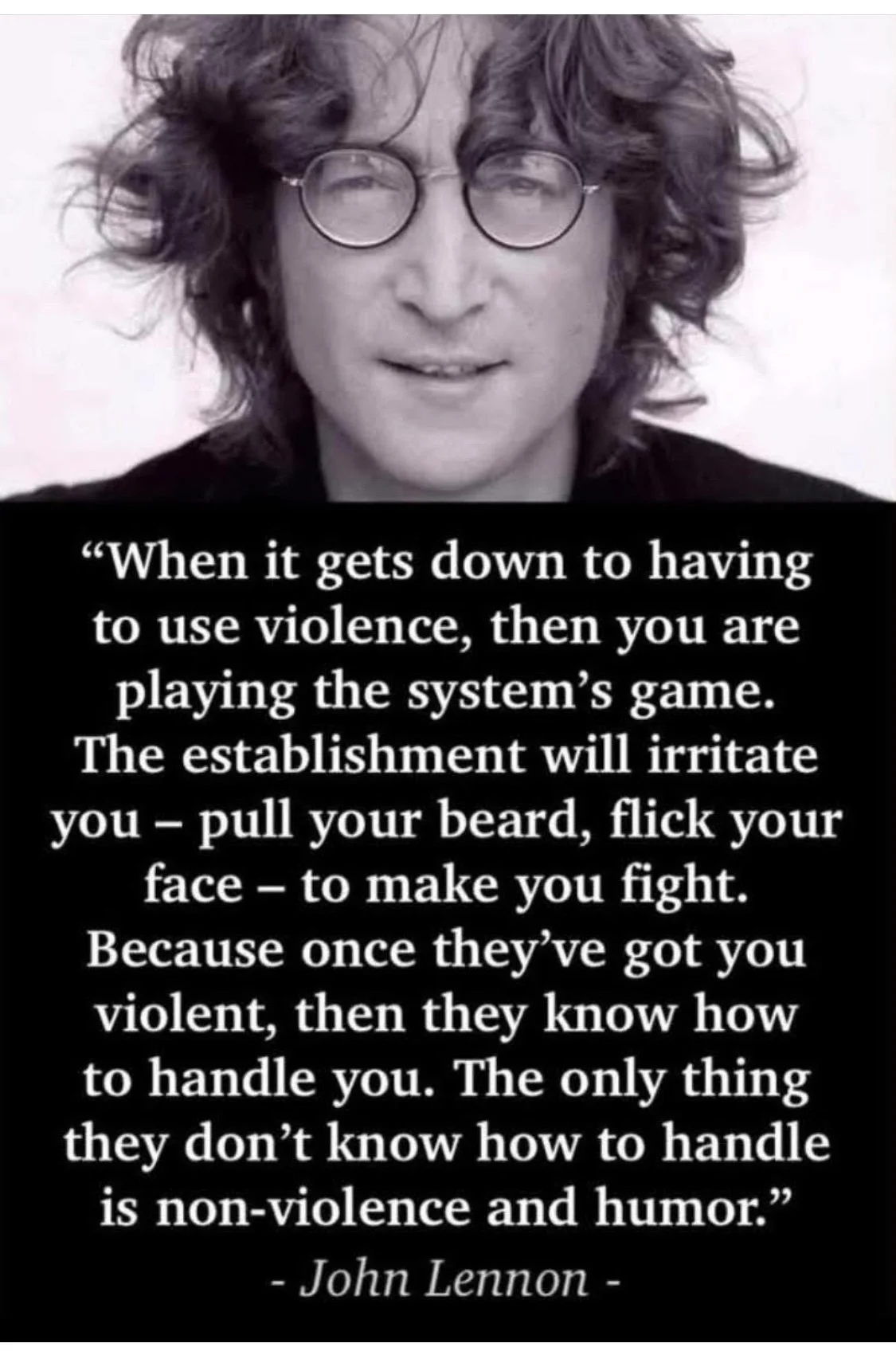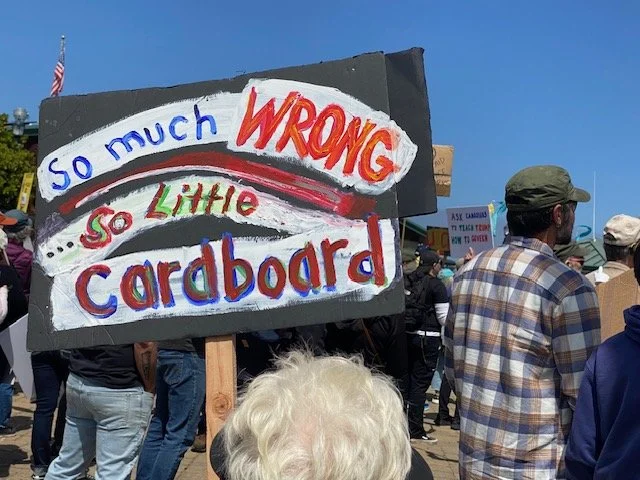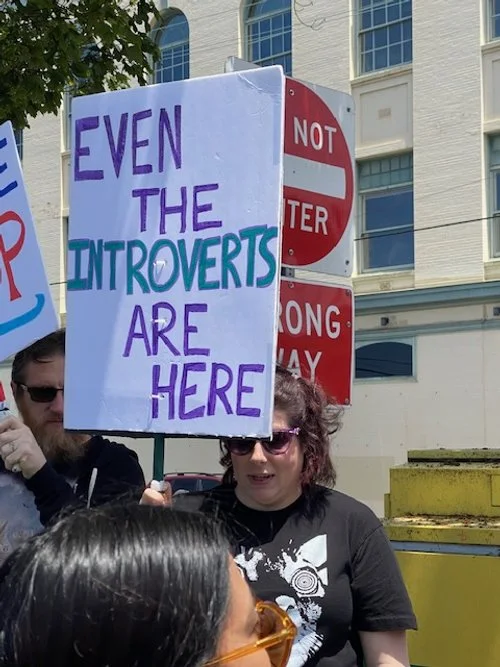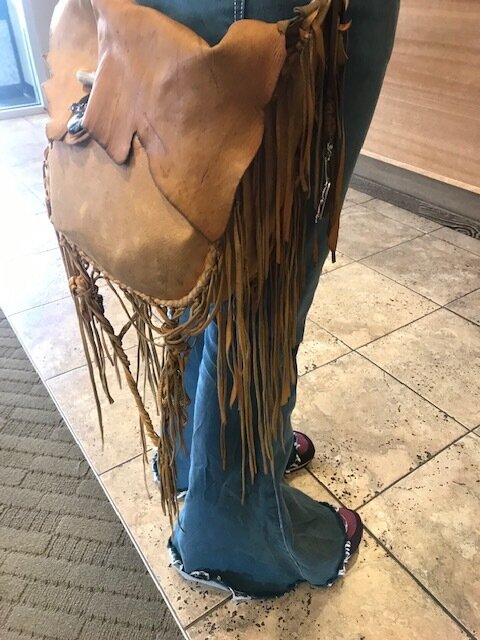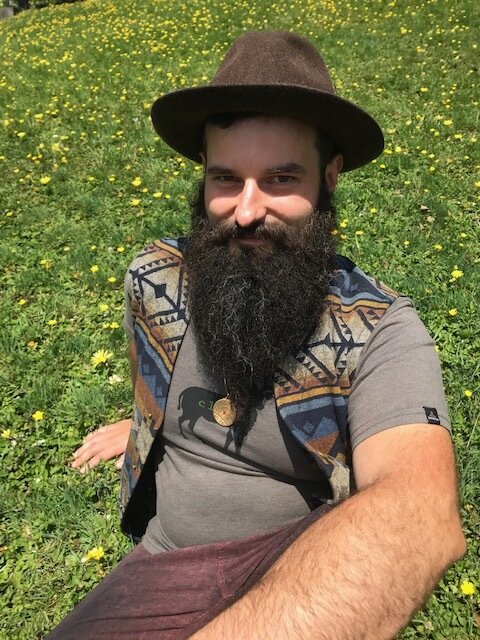the peace movement
Watching the news leaves me blinking in disbelief. It takes real consciousness to choose the lighter path in this time of little shop of horrors.
Every chakra is engaged, starting with the head – enlightenment or confusion, the throat –clear voice or stifled silence, the heart- love or hate, solar-plexus open creativity or rigid righteousness, and finally the root chakra – feeling safe and open to our passions or fear, insecurity, and pent-up. Maintaining a calm center and energy flowing is like swimming upstream against a waterfall. Let’s face it – we’re traumatized.
In this time of upheaval, we must remember that we are meant to be here. What we do and feel is essential. If we want peace, we must find it within ourselves. If we want harmony, we can’t fight for that; we must live it. If we want justice we must insist on it again and again. It is the ultimate challenge – how to live in chaos and not engage-enrage but heal and deal. From Jesus to Nat Chit Hung to the Black Panther, this is what every inspiring story is about.
Each one of us has to decide what’s in our hearts. Do we want revolution, resolution or retribution? Each of these paths is very different. What we hold as a vision guides our actions. Maybe there is even a third option that we haven’t even thought of yet, for we are in the Age of Aquarius; it’s not just about long hair and drugs; it’s about testing every boundary and every idea of normal. This time is characterized by extreme ideals, with the side effect of making it difficult to relate on a personal level. Dig it, we’re there.
We are adrift into a future we cannot rely on. So, all we have is this moment. This is it. This is life. Throw ourselves onto the steps of the Wit Howse, protest, and post signs, but part of the solution is also snuggling our cat, playing with our children, swimming in a river, or also humm… chocolate and wine? Can’t undo it all. Folly has been part of the human condition since day one. Our own happiness can’t be contingent on the outside world.
At every moment we are given an opportunity to live with integrity, uphold our values and nurture our relationships. The simple moments build a life. As the end line of the movie Don’t Look Up says, 'We had everything.' We must savor our scraps of freedom as they are being thrown away with this Idiocracy.
Folly will undo itself.
Karma will be rough for those who play along.
No one is safe until we are all safe.
And since we are trapped in this show of fools, we might as well cut loose and clown around.
There must be some way out of this said the Joker to the Thief… check out All long the watchtower.
Healing the divide
The news is like ceaseless, driving rain pelting my face. Trying not to reiterate what has already been said, this blog is a digestive system rather than an echo chamber. I digest. And, at times, given a lot of bad news, digestion takes a while. I masticate and contemplate, then see what comes up. Let’s call it intuitive news digestion. Now I’m ready to hand you the sh*t.
The Orange Turd - we’ve heard enough about him. What’s more interesting is that he is an icon of a movement. The people who think he’s wonderful are the root of the issue. What does he mean to them?
Our country has a deep rift. But like a fractal pattern, perhaps each of us also has a divide within. We all have demons, but we have learned (through helpful therapy) that the things that haunt us are usually repressed desires, fears, or anger that ooze out of our control and pop up, unbidden to destroy relationships and make our lives difficult. The more we try to rid ourselves of these unsavory attributes, the more they surface. Our minds feel out of control when our anger or ticks wreak havoc until we turn toward the quality we are pushing away.
In the body of America, there is an unmet need, a repressed expression. We are demonizing the other half of ourselves. We cannot divorce ourselves or kill ourselves, so we must face our demon-half of the population, for we demonize each other. Not only must we face our other half, but we must love, hold, and listen to our demons with compassion to try to understand. Only then do we see the ferocious evil melt into a child-like, unmet need.
What is the need for the other half of America?
Well, let’s look at their icon. He is the obvious racist, sexist, capitalist pig that is so very repulsive to science-based, inclusive liberals. But let’s reduce the Orange Turd to a feeling. Well, he shoots from the hip. He’s impulsive. Deeper still, he is illogical. He speaks purely to emotions with no facts or real content.
Here is the first clue to understanding.
Then there are those signs outside our liberal doors or yards that say- We believe - water is life, love is free, no person is illegal, and science is real- it seems almost incomprehensible that we need to say any of this. It’s so obvious. But taking out the sexism and racism (not that these aren’t important), we are left with the part about science. We proclaim its reality as if cell phones, computers, and cars aren’t enough proof.
Maybe another clue.
Confucius maintained that one must liken oneself to oneself. We cannot show compassion to others unless we develop compassion for ourselves. We are all a little bit crazy. Confucius also maintained that it was imperative to chant, do rituals, recite poetry and be moved by music to truly change at a deep level. This is what is offered in the churches of America: feeling, music, belonging, faith, and resurrection. Something that Science, and education doesn’t provide
Psychological clue #3.
See my blog post with pictures of Jesus holding guns. It seemed so bizarre. But when I put on my phycologist thinking cap and see it as an image that has meaning, it becomes less offensive and more of an interesting symbol. Religion is defending itself. It feels endangered and threatened to the point that it needs violence to survive.
Clue #4.
Putting these clues together, perhaps we can hypothesize that the emotional, illogical, spiritual side of America (the religious right) has risen as a repressed monster because it has been impoverished and out of favor with our rational, logical, scientific paradigm of America.
There has been a significant decline in Christianity in America, about 16%. Of the 62% of the US Christian population, 40% identify as Protestant and 19% as Catholic. Perhaps this is the reason why the Catholic Church chose an American Pope.
You can see the mosaic of clues pointing to the root of the divide. Let us put facts aside and journey to the mythical, magical side where we dream and imagine. This is what we need to learn from our counterparts; even though it feels like Christianity is an outmoded religion that doesn’t allow us to move forward, yet it holds the roots of ancient myths, community, and spirit. Scientific, capitalist America needs this, for science on its own is out of moral and spiritual control and will destroy us just as much as non-critical thinking, faith-based political force that we have now.
A quote from the book, A Short History of Myth –
“Because the novelist and the artist operate at the same level of consciousness as myth makers, they naturally resort to the same themes. Joseph Conrad's Heart of Darkness can be seen as a heroic quest and initiation that has gone wrong. Published in 1902, just before the West began its great disillusion, the novel describes the sojourn of the ultimate civilized Mr. Kratz deep in the African jungle. In traditional mythology, the hero left the serenity of the social world behind. He often had to descend into the depths of the earth, where he would meet an unsuspected effect on himself. The experience of isolation and deprivation could result in a psychological breakdown, which led to a vital new insight. If he succeeded, the hero returned to his people with something new and precious. In Conrad's novel, the labyrinthine recalls the subterranean tunnels through which the initiates crawled back into the womb of the Earth and the underworld of the primeval jungle. Kurtz does indeed look into the darkness of his heart but remains stuck in his resignation and dies spiritually. He becomes a shaman manique, with no respect but only contempt for the African community that he abuses.”
“A mythological hero learns that, if he dies to himself, he would be reborn in new life, but Kurtz is caught in the toils of a sterile egotism, and when he finally reappears in the novel, he has the obscenity of an inanimate corpse, obsessed with his own fame. Kurtz seeks not heroism but only barren celebrity. He cannot make a heroic affirmation of life: his dying words are – “The horror, the horror!”. Conrad, a true prophet, had already looked at the triviality, selfishness, greed, nihilism, and despair of the 20th century.”
“In 1922, T.S. Eliot depicted the spiritual disintegration of Western culture in his landmark poem The Wasteland. In this myth of the Holy Grail, the wasteland is a place where people live inauthentic lives, blindly following the norms of their society without the conviction that comes from deeper understanding. How is it possible to put down creative roots in this stony rubbish of modernity where people have lost touch with the mythical underpinnings of their culture? Instead of understanding the inner coherence of their tradition, they know only heaps of broken images. Elliot lays bare the sterility of contemporary life by means of poignant, lapidary allusions to the mythology of the past- to European, Sanskrit, Buddhist, biblical, Greek, and Roman myths. It's alienation, ennui, nihilism, superstition, egotism, and despair as he confronts the imminent demise of Western Civilization. When we have pieced (religions) together and recognize their common core, we can reclaim the wasteland in which we live.”
Notice this book link is not to Amazon. Part of protesting is where you put your money. Thrift books is great. Recommend.
At the end of the Short History of Myth (which I hope some of you read – it is truly short), Armstrong proclaims that humans have always been mythmakers and challenges us to deepen ourselves by integrating living myths back into our lives.
What myth do we hold as true enough that we can let go of our critical minds and just go with the symbolic dream? There are so many breakthroughs in the phycology-therapy sphere that there are signs of real transformational understanding. Science, as well, is expanding into the surreal. So much has come out of the quantum small to the vastness of deep space-time. How can we not see God? There it is - not a God-man, nor a Goddess-woman, yet infinite creations held by endless space. It's magical, mysterious, and powerful.
Maybe our next myth might be a fusion of Jesus and science. Jesus, the transgender, intuitive explorer of space-time, with Mary Mangelin, a genius physicist, explores space in their quantum ship shaped like a cross. They sacrifice themselves to a black hole and come out in a parallel universe, learning that all is destroyed in order to be created again – the ultimate recycling symbol. Infinity is realized. They are resurrected in this parallel universe, bringing back the divine wisdom, logos, to Mother Earth. The Father's wisdom rejoins the emotional Mother Earth, the male and female unite within Jesus, and the repressed feminine becomes empowered through Mary. In a fractal universe, as below, so above, so inside, so outside. Here, within us, is where balance is restored.
Scientific minds integrate with our moral mythical minds, and we can see both truths.
Here is a stab at a space-Jesus myth, but it is not enough. The myth needs music, theater, art, holidays and community to bring it to life. Like so many shifts in religions, the new overlays on the well-trodden path of the old.
Spirituality needs to hold science accountable to life, and science should hold spirituality accountable to open-mindedness. This is the balance we need to survive.
Perhaps this gives us something else to chew on besides grinding our teeth in anger and frustration through the pelting rain of nonsensical atrocities. We protest and put a sign on our front lawns, but we also need to look for solutions within our own lives. How are we divided within ourselves? Are we whole? What spiritual language do we speak, and can we use this to decipher what our religious counterparts are saying?
No matter what happens, even if it all looks bad, it comes down to what is in our minds and relationships. How do we want to spend these precious moments of life? Hate and worry erode our soul. There’s more than one dimension to work on.
Cut loose, dream deeply, imagine unity, and untangle our feelings by befriending our pain. Sorting out what the other half of Americans are about is beyond what the crazy T-rex does. He’s a patsy to the dying oil industry (even as the Earth’s ecosystems collapse), a stubborn patriarch (which I am losing hope that we will ever get beyond), and an egomaniac (endemic of our culture). Our conservative family and friends will still be here long after he is gone. We can only change ourselves and make the heaven we hope for by developing our inner world for who has ever had the outer world be perfect? Well-being is our affair. Developing compassion and understanding for our conservative population is what will move us closer to a calmer center and a cohesive America. This is not easy. Hate and division are much easier but more toxic and will lead us to destruction.
This is a call for each of us to be the hero in the journey to wholeness.
Take it to the Mountain
Mt. Hood
I had to leave. It’s all just too much. I went to the snow-capped mountain - for solace, for perspective, for quiet. Water tumbled down through its sloughed-off skin of rock and grit. I drank deeply of clear water in my cupped hands, but also in spirit. The placard said that the glacier was gone, and the white blanket on the peak was now seasonal snowpack. My worries for the world resurfaced. There is no place to escape without the pressures of the world clawing at inner peace.
But as I gazed up at the cragged peak, it seemed to speak to me, saying- Don’t worry about me. I’m mountain.
Three Sisters
This mountain had seen lands rise and fall, creatures come and go, and so many changes on the planet. It didn’t need me to worry about it. I had to look inward at the very act of worrying; how worry was so unproductive and a burnout. It does absolutely nothing besides make me feel bad and spin into scenarios of actions that I would probably never accomplish, which leads to feelings of failure.
I had to find my inner mountain to stand tall with a steady base of generations and face change with unflinching steadfastness. Sitting in the chill of melting snow, listening to the rush of the stream, there was a quietness below the chatter—a solid base of existence. I am here to ride this wave by bearing witness. Here, in this moment of stillness, I am mountain.
Apple trees blooming.
But as I enter back into the world of demands, I can only channel that quality at times. It takes but a flick (or more like a flogging) of bad news to tumble me down off my mountain, and I am swimming in emotions again.
Ahh, to be human.
But my message here is one of encouragement: Take a moment outside in the fresh spring air to find inspiration. Find something or someone who will speak to you and give you counsel and comfort. Seek out wisdom, and it will come to you, heal you, and give you the answers you need. It doesn’t mean all will be well, but it helps quell the turmoil.
History Repeats
The Republican Party dominated the early 1900s politics. Their laissez-faire hands-off approach to economics was based on limited government, free trade, tax cuts, reduced government spending, privatization, and no social service programs. It was all about personal responsibility, and the overarching ideal was Darwin’s theory of survival of the fittest. If you were poor or of ill health, that was your problem. There was no social security, disability, or social services. Life was bleak if you were poor. Muckrakers, investigative journalists, and photographers brought awareness of the suffering of the masses. The Robber Barons, Rockefeller, Carnegie, and Vanderbilt, to name a few, were prominent men who amassed immense wealth by creating monopolies of ownership and treated their workers like slaves. Anyone who criticized them was fired, and some were put in jail.
The economy crashed. Like the game Monopoly, there are only a few winners, and everyone else loses. Life just isn’t fun when a few have all the money and everyone else is poor. When Franklin D. Roosevelt, FDR, swept most states with his New Deal, he reversed that trend, investing heavily in social services and making a government that regulated the economy. The Dust Bowl exacerbated the economic collapse, and the new Democratic government subsidized farms to leave their fields fallow to have the land rest.
His New Deal was so popular he was elected for four terms. The Republicans hated him and have wanted to dismantle Social Security, social services, farm subsidies and government oversight ever since.
It’s been a100 years. We have forgotten. So, history repeats itself. Now with a more cynical edge. The stakes are higher. If you are caught protesting, the government can now freeze your assets, deport you, or put you in a jail – a secret jail constructed in Gautama. This is a nasty government. It’s no longer about just not taxing the rich, it’s about dismantling the safeguards that protect people’s rights.
FDR was elected by 57% of the people. 39% were for Hoover. 39% is about the same as today. These are the m*aga, the capitalist-christian idealist who believe in no monitoring or control by the government, no gun regulation, and religion taught in schools. Basically - government, don’t tell us what to do! The idea is that life is so much better when the government stays out of the way and people do whatever they want. Well, just check out history to see how that went.
This graph shows gray areas where there are recessions, and blue areas where there is unemployment. Recessions roughly correlate with long stints of Republican rule.
Are we doomed to go through this cycle every 100 years? Do the stakes get higher and higher, where eventually, we end up living in the story Star Wars, blowing up planets? I’m getting tired of the ultimate evil power taking over. Isn’t there another storyline? It seems like humanity is just not imaginative enough to consider another way. We will keep going around and around with this same projection. And indeed, our imaginations form reality. We have invested so much of our fantasies into doomsday scenarios that now we are creating our worst fears.
It may be that we must repeat this cycle- the capitalist taking over the socialist society, things degrade because the economy can’t thrive in an unstable society, then social stability is reclaimed, democracy is made better, money flows, greed grows, then the capitalist takes over again. The only way to step out of this circular drama is for people to really understand history and the cost of this repeating pattern, then vow not to repeat it. Perhaps it needs to be so bad that it is burned into people’s minds that it’s a terrible idea to let the wealthy few control a government. But history has shown how bad it can be, and yet here we are again. History is either not being taught, or we don’t understand how the events of the past relate to today.
This graph shows red for registered Republicans, blue for registered Democrats and gray for registered independents. Interesting to see that it is the independents that really decide the vote.
If the public applied knowledge of history, they may realize it’s not the government that is the problem—it’s the people who run it. Only then might we stop attacking our own systems like an auto-immune disease and start being a healthy society. Until then, we may be stuck on a merry go round of forgetfulness.
Dr. Seuss taught me how to be a good human
I read so much Suess
My brain talks in rhythms
It takes a bit to get used to
I can say whatever do-dissimes
Which is a made-up word
Of course, I know
But in Mr. Suess's world
Everything is a go
This leader we have now
Or what-ever he thinks he is
Can get out of hand
With his palm full of schiz
He’s tired, he says
Of the simple democracy
So he creates some havoc
Some Ooblick and controversy
The country is divided
With the butter side up and butter side down
Fighting for what?
A Christ? a crazy? A capitalist clown?
He wants to take countries
For his private retreats
Even though there are people
There in their homes and streets.
The star belly Sneetches
With their stars upon their visas
Have the dumb and complacent
Letting them do whatever they pleases.
Did we not learn from Suess
On how not to be a Zax?
Who are stubborn as heck
And don’t listen to facts
Or how to avoid a war
With our buttery bread
It’s not about butter
It’s about what’s in your head
We’ve read them all
I do believe
Or maybe it’s just been
the lefties and me
All the rest of the nation
Have only listened to
The ranting Rush Limbaugh
And the deceptive Fox news
We need more Dr Seuss books
in every school, home and hollow
To read to our nation’s children
So we’d know better who to follow
Dr Seuss Rap-
The Tao of the Times
In China in the early 700s B.C., political and social conflict was raging. The Chou dynasty, driven from its seat by Western invaders, felt its authority crumble, and the Chinese people fought amongst themselves instead of unifying to defeat invaders. Within this hotbed of social disorder, Confucius and Lao-tzu emerged. Confucius lectured on social, moral, and political righteousness to quell the storm, while Lao-tzu did very little and tried to leave. On his cart, drawn by a black bull, he was stopped at a mountain pass and requested by the gatekeeper to write down his wisdom. This was the birth of the Tao Te Ching. This book of wisdom and divination poetically describes the indescribable, what it is to be human. It is The Way that it points to the underlying patterns of nature.
It's seemingly unrelated history, but just as our government falls into the hands of a madman and we see our country teetering on failing while we fight amongst ourselves for what it means to be an American, it is important to remember that humanity has had many cycles of unrest. Just putting it in perspective gives us a bit of spaciousness around our current trauma. Secondly, the advice of the Tao Te Ching is timeless. It resounds true no matter what time we are in. And that it was created within the throws of political upheaval gives it all the more validity.
The Tao concerns itself not only with the well-being of individuals but also with the methods by which consciousness could evolve and the subsequent harmony within social groups. Lao-tzu’s advice for dealing with pillage, tyranny, and slaughter was to do nothing. It seems that inaction in such circumstances would be dangerous. However, Lao-tzu’s version of inaction is peculiar and has more to do with the individual's deep well-being and understanding of the true nature of things
“The Sage does not boast; therefore, he is given credit.
He who acts - harms, and he who grabs- lets slip.”
In a nutshell, force defeats itself. Every action produces a reaction, every challenge a response, and off we go on the merry-go-round of drama. Lao-tzu describes nature as having a law of inertia where the tendency is to continue to be what it is. Interference with the natural state creates resistance. Human society is also a natural state, and any ruler who tries to act upon it ultimately creates a situation that results in the opposite of what was intended.
Indeed, we can see that we are on a political pendulum. The farther it swings one way, the harder it swings back the other way. Instead of trying to change the world, perhaps we should concentrate on quelling the swing. We can rail against all that is going on or try to calm ourselves, find connection, and develop simplicity. This tactic might create more results than any soapbox we can yell from. Indeed, our environmental issues would ease if we chose simplicity, and our social issues might cool if we chose connection and caring.
“Use straightforwardness for civil government.
Use surprise for military operations.
Use non-involvement to take the world.
How do I know this?
The more taboos there are in the world, the poorer the populace is.
The more crafts the people have, the more exotic things are produced.
The more laws are promulgated, the greater the number of thieves.
Therefore, the sage says I contrive nothing, and the people are naturally civilized.
I am fond of tranquility, and the people are naturally upright.
I have nothing to do, and the people are naturally enriched.
I have no desire, and the people are naturally simple.”
One of the statements that struck me was about taboos. It feels like the politically correct movement has created a lot of taboos as well as the politically right. On one side, we can’t say he or she, but on the other side, we can’t say global warming or even Covid. We can’t talk about the bible, and we can’t do rituals that aren’t’ our own because of cultural appropriation. It’s a world of Taboos. But strangely, it's not about sex, violence or drugs. You can do that as much as you want and post it all over social media. I wonder about social media and how much it has contributed to our current situation.
Lao-tzu had a hands-off approach because, from his perspective, fighting begets more fighting—case in point Palestine. I think Lao-tzu would recommend something more like how Gandi handled the resistance to English occupation or how Martin Luther King handled racism – by not complying.
And we just had Buy-nothing-day. This day would make Lao-tzu happy. Promoted by the magazine Adbusters, it has become a holiday of the hip. I had such a good time not buying anything that I might make it a week-long event or even incorporate it into my lifestyle. It’s a release of time, energy, and money – a genuinely Taoist take on subverting the powers that be. If Tesla's sales went down, E=pie Musket would take notice. If people refused to work for Prump, he would be powerless. It’s a matter of everyone getting sick of these clowns and not feeding the alligators.
But how long does it take to get people to shift their views? Well, when Dollar Stores closes, and McDonald’s isn’t cheap anymore, then we’ll see real change. Until then, the Worldwide Wrestling Washington will continue to surprise and entertain us with their theatrics of distraction.
But as a hippy in the woods, I’m getting on the cart of keeping it simple. It’s one of the hippy values – simplicity, less is more. Another hippy value is seeking your truth and enlightenment. There was an experiment in Washington where 2,500 meditation masters came and meditated in D.C. On that day, crime dropped by 25%. This type of action could create real change. If we were all working on our enlightenment, there might be a soothing of the hysteria, a shift in consciousness. It’s not just woo-woo; it’s in the science of quantum physics and all the sacred books of the world. The kingdom of heaven is within.
But to calm our minds, we must work on it and stop fanning the flames. Each of us must find our peace and joy by seeking holistic wisdom in this time of craziness. I hope humanity resist the knee jerking responses and chooses instead to think carefully about how to create the real change we hope to see in the world. For like the yin-yang symbol shows, one extreme begets the other. The only way out of the paradox is for each one of us to understand and embody balance in body, mind, and spirit.
